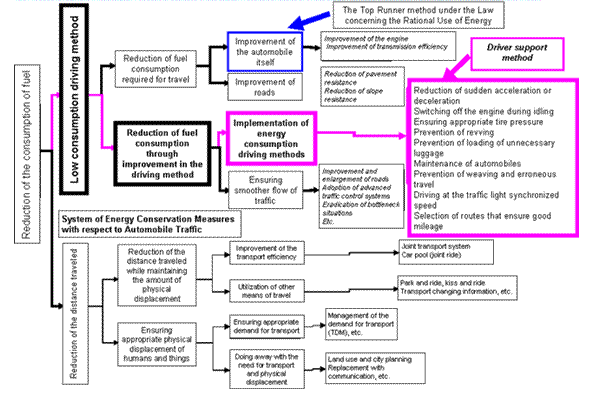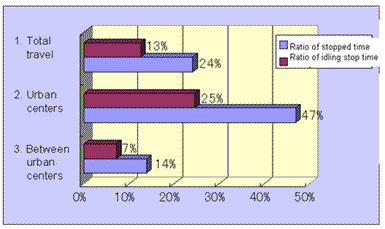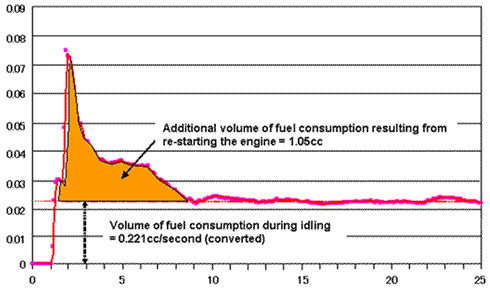Measures for Reducing the Volume of Fuel
Consumption of Automobile
Consumption of Automobile

| AEEC Home | Training Index | Index | Top | Previous | Next |
| ECCJ / Text | India |
Measures for Reducing the Volume of Fuel Consumption of Automobile |
 |
| II-4. Energy Conservation Measures for the Transportation Sector Promotion of Cars with the "Idling-Stop" System |
||||
|
The Effectiveness of Idling Stop |
| Stopped Time and Status of Implementation of Idling Stop |
 Effect of idling stop Reduction of fuel consumption by: |
On Effective Idling Stop Time
Since the length of time waiting for traffic lights to change of 5 seconds or less is rare, there are no substantive limitations. |
| 5/12 Next |
| AEEC Home | Training Index | Index | Top | Previous | Next |